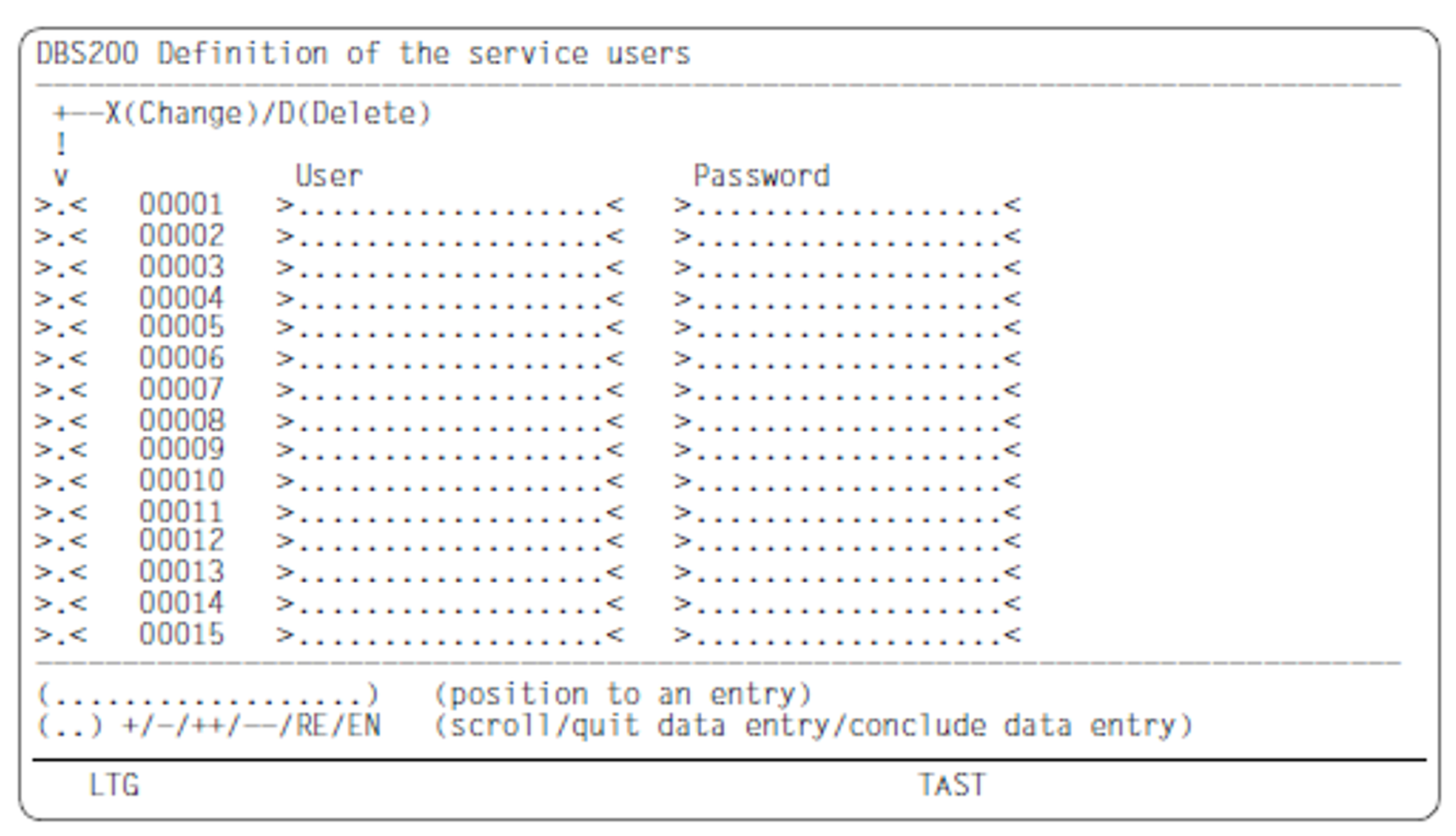When you start the SYSPRC.SESDBA.091.USER procedure, the following screen will be displayed to allow users to be entered.
You can enter user names and their passwords in this screen. These are then stored and used later to check users when a client connection is made. The user name corresponds to the SESAM/SQL authorization identifier.
User
You can enter the user name in either uppercase or lowercase characters, although no distinction is made during logon. Do not use spaces in the user names.
Password
You can also enter the user password in either uppercase or lowercase characters, but no distinction is made during logon. The password can contain spaces. If you are entering a new user, you must specify a password. After you press the DUE key (transmission key), all the passwords entered are hidden. If you change a user name, you will have to enter a new password.
Marking column ( X (Change) / D (Delete))
New user entries are recorded in empty lines, i.e. you do not need to make an entry in the marking column.
After pressing the DUE key all the passwords entered are hidden and all entries are set to write-protected.
The marking column can contain the following information:
X | An existing user entry can be overwritten and changed. |
D | A user entry will be deleted. |
Position to an entry
To move to a certain user in the table, enter the user name in this field. If you type an incomplete name, you will be moved to the first user name corresponding to these characters.
Scroll/quit data entry/conclude data entry
You can choose from:
+ | go to next page |
- | go to previous page |
++ | go to end of table |
- | go to beginning of table |
RE | terminate entry without saving new information in the user file |
EN | terminate entry, sorting and saving new information in the user file |

